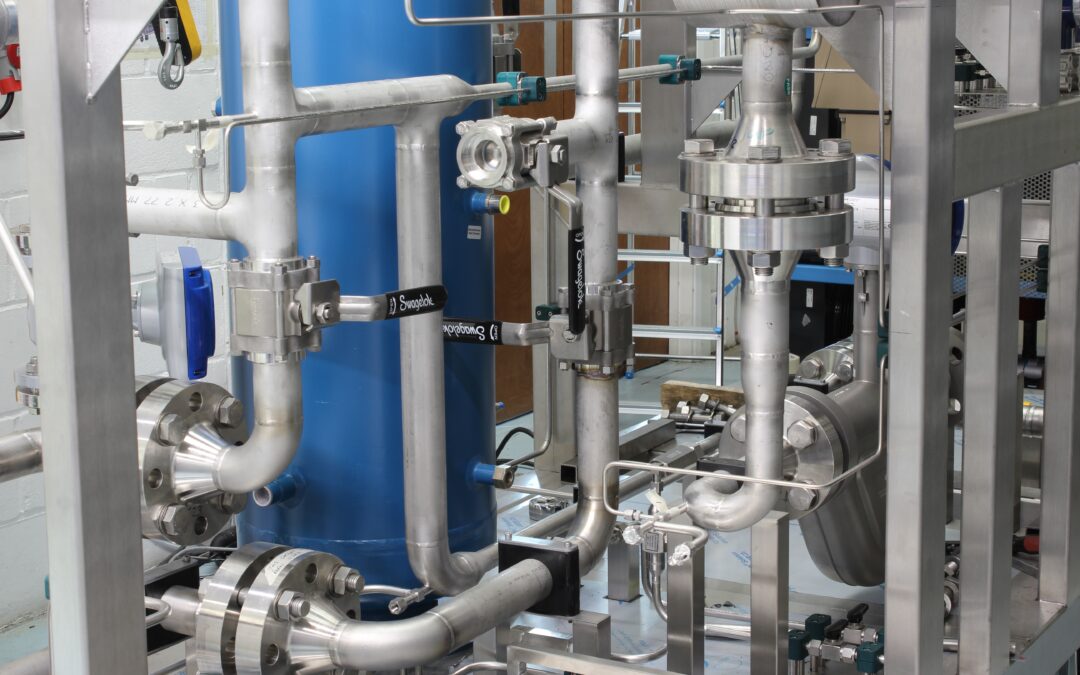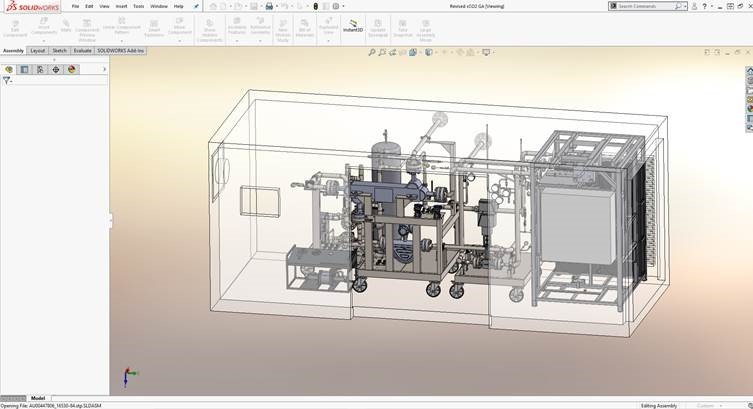Orbital Fabrications worked closely with Brunel University London over the course of 2019, to develop the first pilot plant in the UK and Europe for super-critical CO2 power generation.
Overview
Orbital Fabrications have been working closely with Brunel University London over the course of 2019, to develop the first pilot plant in the UK and Europe for super-critical CO2 power generation.
Together with hydrogen, super-critical CO2 (sCO2) is the new frontier of power generation. Among the others, advantages of sCO2 over conventional power plants are higher efficiency, more compact systems and greater flexibility. Promising applications for sCO2 power units are: retrofit of fossil fuelled power plants, nuclear and concentrated solar power, as well as high temperature waste heat recovery.
Challenge
The key challenge for our lead Design Engineer Freddy Carter, was the deployment of sCO2 power systems lie in the need for cost-effective components, materials and manufacturing processes encouraging high efficiency regardless of the high operating pressures, temperatures and the corrosive nature of CO2 in these conditions.
Orbital Fabrications developed, manufactured and instrumented the core of the first sCO2 pilot power system, designed by the Centre for Sustainable Energy Use in Food Chains (CSEF) of the Institute of Energy Futures at Brunel University London within the framework of the EU-funded research and innovation I-ThERM Project. The purpose of the test facility is to investigate the recovery capabilities from exhaust flue gases at up to 800°C and the further conversion of the recovered heat into electricity using the sCO2 power cycle.
During the design process, Orbital Fabrications used the full suite of SolidWorks on our brand new workstations to produce 3D CAD models of the system and subsequent assemblies, derived from an initial P&ID supplied by Brunel University and working through various design reviews, both in-house and with the client. Detailed engineering drawings and rendered images were then created, enabling our in-house production staff to proceed with the manufacturing phase.
One challenge that arose during the design of this system was in relation to space. The completed assembly needed to fit within a purpose built shipping container, with internal size reduced further due to the addition of insulated walls and a wooden supporting floor. With this in mind, it was also necessary to design for manufacture and make it as easy for our production staff to produce as possible, without compromising function or safety. Additionally, certain pieces of equipment included within the system grossed weights of over 300kg, which required stress calculations of our stainless steel frame to be calculated and considered. The completed system weighed in excess of 3 tonnes.
With various parts of the sCO2 system having wall thicknesses in excess of 8mm to cope with both the exceptionally high temperatures and pressures with diameters of up to 2″ NPS, our skilled, certified manual welders ensured penetration by completing sufficient runs of the weld site. The thickness of these large diameter pipes meant that some manifolds weighed in excess of 200kg, inciting use of our in-house crane to assist with both the manoeuvrability of manifolds on completion and also to locate manifolds and enable welding in-situ. Autogenous orbital welding process were also applied where necessary with use of smaller bore pipework, such as 1/4″ and 1/2″.
Result
Upon completion, the system was successfully pressure tested to a maximum of 170 Bar to ensure strength of the components and pipework used, this test was witnessed by an Independent Notified Body in order to comply with aspects of the Pressure Equipment Directive (2014/68/EU). Joints and unions were then Snooped to determine that no leaks were present, and the system was left pressurised for a period of time to satisfy us that pressure was not being lost, before being shipped to Brunel University for our site installation team to locate and re-assemble.

